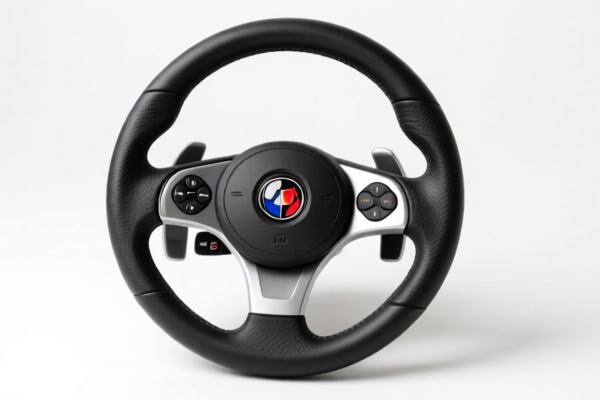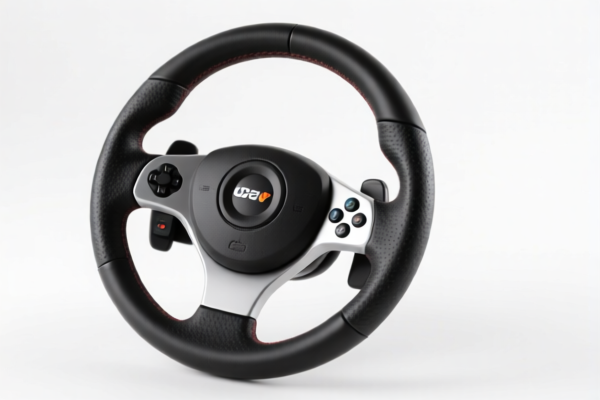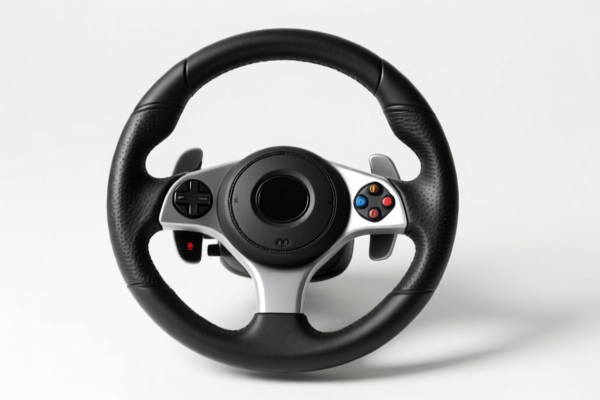| HS Code | Official Doc | Tariff Rate | Origin | Destination | Effective Date |
|---|---|---|---|---|---|
| 8708941000 | Doc | 55.0% | CN | US | 2025-05-12 |
| 8708945000 | Doc | 57.5% | CN | US | 2025-05-12 |
| 8714998000 | Doc | 47.5% | CN | US | 2025-05-12 |
| 8206000000 | Doc | The rate of duty applicable to that article in the set subject t+30.0% | CN | US | 2025-05-12 |
| 8204110030 | Doc | 64.0% | CN | US | 2025-05-12 |
| 8204110060 | Doc | 64.0% | CN | US | 2025-05-12 |




Steering Wheel
A steering wheel is the primary input device used for controlling the direction of a vehicle. It is a circular wheel, typically connected to the steering system via a steering shaft, and allows the driver to maneuver the vehicle by transmitting rotational motion to the steering mechanism.
Material
Steering wheels have evolved in material composition. Common materials include:
- Wood: Historically prevalent, often found in classic vehicles, offering a warm aesthetic but requiring significant maintenance.
- Plastic: Widely used due to its low cost and moldability. Often textured or coated for improved grip.
- Metal: Used for the structural components, sometimes visible as spokes or a ring. Aluminum is common for its strength-to-weight ratio.
- Leather: A premium material providing a comfortable grip, durability, and a luxurious feel. Often used in higher-end vehicles.
- Alcantara/Microfiber: Offers excellent grip and a soft touch, often used in performance vehicles.
- Carbon Fiber: Lightweight and strong, typically found in high-performance and racing applications.
Purpose
The fundamental purpose of a steering wheel is to allow the driver to precisely control the vehicle's heading and direction of travel. This includes:
- Turning: Initiating and maintaining turns.
- Lane Keeping: Making subtle adjustments to stay within a lane.
- Maneuvering: Controlling the vehicle in tight spaces.
- Vehicle Control: Contributing to overall vehicle stability and control, particularly in emergency situations.
Function
The steering wheel functions through a mechanical or electronic connection to the vehicle's steering system:
- Mechanical Linkage: Traditional systems utilize a direct mechanical connection (steering shaft, gears, linkages) to translate rotational input into steering.
- Power Steering: Systems utilize hydraulic or electric assistance to reduce driver effort, particularly at low speeds.
- Rack and Pinion: A common steering mechanism where rotational motion is converted to linear motion to steer the wheels.
- Steering Column: The shaft that connects the steering wheel to the steering gear.
- Electronic Power Steering (EPS): Uses an electric motor to provide steering assistance, offering adjustable levels of assistance and integration with advanced driver-assistance systems (ADAS).
Usage Scenarios
Steering wheels are used in a wide variety of vehicles and scenarios:
- Road Vehicles: Cars, trucks, buses, motorcycles.
- Off-Road Vehicles: Jeeps, ATVs, UTVs.
- Racing Vehicles: Formula 1 cars, stock cars, rally cars.
- Boats/Ships: Used for steering marine vessels.
- Aircraft: Control surfaces (ailerons, elevators, rudder) are often controlled via a yoke or wheel.
- Heavy Machinery: Tractors, excavators, forklifts.
Common Types
- Standard Steering Wheel: The most common type, found in most passenger vehicles.
- Sport Steering Wheel: Often smaller in diameter, thicker, and with a more aggressive grip.
- Flat-Bottom Steering Wheel: Popular in performance vehicles, offering increased legroom and a sportier feel.
- Multi-Function Steering Wheel: Incorporates controls for audio, cruise control, navigation, and other vehicle functions.
- Paddle Shift Steering Wheel: Features paddles behind the wheel for manual gear selection in vehicles with automatic transmissions.
- Removable Steering Wheel: Used for security purposes or in specialized applications.
- Yoke Steering Wheel: Increasingly found in some electric vehicles, offering a different grip and control experience.
Steering Wheel Classification
Based on the provided information, the following HS codes are relevant to “steering wheel”:
-
8708.94.10.00: This HS code falls under Chapter 87, which covers Parts and accessories of motor vehicles of headings 8701 to 8705. Specifically, it is for 8708.94, which denotes Other parts and accessories, and further specifies 8708.94.10.00 for Steering wheels, steering columns and steering boxes; parts thereof, and more precisely, Steering wheels, steering columns and steering boxes for tractors suitable for agricultural use. The applicable tax rate structure is: Base tariff: 0.0%, Additional tariff: 25.0%, Post-April 2, 2025, additional tariff: 30.0%, resulting in a total tariff of 55.0%.
-
8708.94.50.00: This HS code also falls under Chapter 87, covering Parts and accessories of motor vehicles of headings 8701 to 8705. It is categorized as 8708.94, Other parts and accessories, and further specified as 8708.94.50.00 for Steering wheels, steering columns and steering boxes; parts thereof, specifically Steering wheels, steering columns and steering boxes for other vehicles. The applicable tax rate structure is: Base tariff: 2.5%, Additional tariff: 25.0%, Post-April 2, 2025, additional tariff: 30.0%, resulting in a total tariff of 57.5%.
Important Note:
When declaring steering wheels, it is crucial to determine the intended use of the product. If the steering wheel is for tractors suitable for agricultural use, HS code 8708.94.10.00 should be used. If it is for other vehicles, HS code 8708.94.50.00 should be used. The applicable tariff rates differ between these two classifications.
Customer Reviews
No reviews yet.